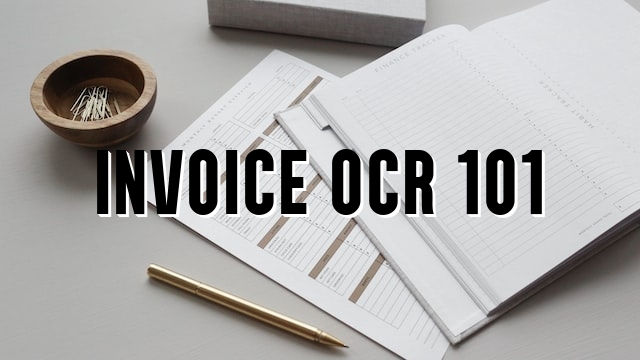One of the most popular phrases in the sales world is “always be closing”. This fairly aggressive sales tactic comes from a movie, and it has been a motivational phrase for many sales teams across the globe. However, if everybody is always closing, who ensures the payment for all those sales is coming through?
That would be the unsung heroes of finance and accounting – the accounts receivable department.
Accounts receivable department (AR) is one of the essential departments in any business. Your AR will be in good shape with a well-structured department, streamlined processes, and adequate automation.
Why is that a big issue? Because a healthy money flow depends on the AR's ability to record, manage, and even ensure customer payments properly. Let's go back to the basics and explain all aspects of a successful accounts receivable department.
Accounts receivable department: definition and functions
By definition, the accounts receivable department is the part of the business that deals with the incoming payments and money flow. The AR department's job is to issue detailed invoices, track their payments, and take action if there are issues in that process. While managing incoming payments is the essential role of this department, this team's work has much more significant effects on the business.
Here are some of the additional functions and roles of a successful AR department:
Issuing and managing invoices
Once a sales team closes a sale, it is time to deliver the services and the goods. Right after that, the accounts receivable department needs to issue the invoice. For this to happen, they must create a detailed invoice with all the essential elements. An invoice must include:
- The word "invoice” needs to be prominent on the invoice document
- Invoice number
- Invoice date
- Service or sales date
- Contact details
- Buyer details
- Services or goods listed in separate lines
- Cost per unit
- Tax if applicable
- Total amount
- Currency
Assessing customers for credit eligibility
It is common for companies, especially in the business-to-business space, to issue trade credit. This means a company would provide goods or services to another company, allowing them to pay later. Ideally, this practice ensures good business relations and helps business growth. However, it is not without its apparent risks.
That is why the accounts receivable department needs to check the “creditworthiness” of a client before such trade credit is allowed. Basically, they establish if the company is more or less likely to pay for the goods or services provided. Some of the ways to check creditworthiness include:
- Running credit report
- Checking references
- Ask the company for a financial standing report
Matching payments to open invoices
Besides issuing the invoices, the AR department is also responsible for tracking the payments and checking whether the company received the payment for those invoices. This means they must meticulously record which invoices are still open and apply each payment toward its respective invoice. That is the only way to have a clear and accurate picture of the company’s cash flow and budget.
Dealing with unpaid invoices
There are cases in every business where invoices are not being paid. It is under the accounts receivable list of duties to take note of this. Moreover, they should do everything possible to avoid or get these paid. Email reminders, phone calls, and similar correspondence help with the matter.
If this doesn’t work and the invoices are still unpaid, the AR department can take other courses of action. One of them is to hire designated agencies that deal with debt collection. While this doesn’t ensure full payment, it can still be an acceptable financial risk. From the financial standpoint, the last resort is writing off this owed amount as a bad debt.
Bad debts are all balances that cannot be deemed. They are written off, and they are a reality of doing business. However, keeping them to a minimum is paramount for running a financially viable business.
There are two ways of dealing with bad debts. One is a direct write-off, and the other is an allowance write-off. With the direct write-off, the AP department estimates debt as uncollectible when it becomes unavoidable. The allowance write-off involves an estimate of the amount of the expected uncollectible debt. The company then increases its bad debt expense and allowance for uncollectible accounts.
Performing reconciliation
Regular reconciliation is essential for running a healthy business and making informed financial decisions. It also helps prevent fraud. AR reconciliations include checking the amounts of unpaid dues (according to the AR) against the general ledger. To perform this reconciliation properly, it is necessary to:
- Make the estimates based on all relevant documents that AR issues or manages
- Perform meticulous and diligent comparisons
- Keep a close eye on duplicate entries
- Investigate discrepancies in great detail
- Avoid leaving unresolved issues
- Perform reconciliation at least once per quarter
Meaningful reporting
With all the data that accounts receivable collects and tracks, it is no surprise that there are many insightful reports that they can generate. The type of reports they create regularly depends greatly on the business specifics. All AR reports can be classified as:
- Reports about customers
- Reports about payments
Reports about customers can include detailed list including everything you have on their file. It can also be about the total revenue by customer or the total of all transactions for a certain period of time.
Reports about payments can include reports about the total of paid vs unpaid invoices, history of payments and transactions, and many more. Among the most common reports are the aging reports.
Aging reports show how many invoices are left unpaid. They can be classified as not yet due or by the past due date. Some companies choose to classify them as:
- Up to 30 days past due date
- Between 30 and 90 days past due date
- More than 90 days past due date
Analysing these reports gives the AR department a good idea of which invoices are a priority, which clients have a history of late payments, and how to set up credit policies.
Maintaining good relationships with customers
A Journal of Retailing and Consumer Services published a paper by a group of authors titled, “Does managing customer accounts receivable impact customer relationships, and sales performance? An empirical investigation.” This group of authors used a survey and examined 224 salespeople. Their conclusion was as follows:
“Our findings suggest that accounts receivables from customers and salespersons ‘customer orientation strongly impact relationship building and also improves customer-related performance.”
Given that it is the responsibility of the AR department to see through the entire payment process, it is evident that they must have direct contact with the clients. Being careful, tactical, and diligent about payment reminders, giving credit, and estimating the client’s situation is essential. Some may say that the AR department is an extension of the customer success department.
Accounts receivable vs accounts payable
Accounts payable and accounts receivable are similar but not the same. While AR are payments your company receives from your customers and clients, Accounts Payable (AP) are payments you owe to others. That can be business partners, vendors, and suppliers.
Accounts Payable include:
- Product expenses
- Raw materials
- Supplies
- Transportation costs
AP does not include:
- Payroll
- Overall mortgage
Therefore, accounts payable impact your cash outflow, and it is considered a liability. On the other hand, Accounts Receivable is a part of your cash inflow, and it is considered an asset. The difference between your AP and AR shows whether the company is profitable or not.
Accounts receivable workflows and process
Given that the Accounts Receivable workflow and process are all about dealing with the short-term debts and payments for the products and services delivered - their workflow starts once the customer places an order or demands services or products.
That is the trigger for starting the entire AR process, which has several steps. Here, they are simplified and explained in general terms. However, different businesses can have different processes and workflows in place that make more sense for their specific situations.
When the customer places an order, it starts the following workflow:
Step 1: Assessing customer creditworthiness
Each company should have a well-established payment policy that includes payment due dates. However, in reality, not all payment due dates are met promptly. That is a common occurrence in every business and needs to be considered.
While some late payments are entirely understandable, the AR department needs to be careful about not allowing excessive debt to pile up. That can disrupt healthy cash flow and put businesses in grave danger.
That is why one way to protect a business's financial integrity is to assess customer creditworthiness before allowing for credit. This is especially important if the significant sums are in question.
When assessing creditworthiness, there is more at stake than making sure that the debts toward the company are secured and eventually paid. It is also a crucial factor in customer relationships. Allowing credit or not is also a matter of trust. While credit policies are in place, there is always some leeway and navigating space to allow and deny credit for new and existing customers to maintain a particular relationship.
New customers
It is essential to set expectations right from the start by agreeing on a clear and transparent payment and credit policy with the new clients. With new customers, proper assessment of creditworthiness is crucial.
Existing customers
One of the best ways to ensure both parties are satisfied with your arrangement is to conduct regular reviews of the credit terms. It is a great idea to offer better conditions to your existing customers if you realize they are scaling up and potentially can increase their spend with your business as they grow. That can establish you as a favorable business partner and increase loyalty in your customer base.
Step 2: Creating the invoice
Upon the agreement and established credit policy, it is time to issue the invoice. The invoice is the evidence of the client’s purchase and it contains the due dates and the amount owed, among other things. As soon as it is issued, the payment terms begin. That is why it is convenient to have an invoice automation system that issues the invoices instantly when the purchase is confirmed.
Step 3: Payment management
In an ideal scenario, the payment promptly follows once the invoice is issued. However, the reality of conducting business is not that simple. Different payment methods must be considered: late payments, possible late payment fees, and many other factors. That is why this step has different aspects to consider.
3a: Payment processing
Every AR department needs to determine the acceptable payment options for their customers. Ideally, they have several options and offer them to all customers. Some have different options for different types of clients and don’t give everyone the same payment options, just as they don’t give everyone the same credit.
Among the most commonly used payment options are different types of cards, wire transfers, checks, and Automated Clearing House (AFC) or Electronic Funds Transfer (EFT).
3b: Payment collection
AR department needs to be aware of the status of every invoice that is issued and every payment that has been made. One of the ways to ensure the payment is to send out timely and well-worded payment reminders. They can be sent when the deadline is approaching and after the payment due date has passed and the payment has yet to be made.
Once the payment has been made, it must be assigned to the corresponding invoice. This process is called cash application.
The payment management process also includes dispute resolutions. The dispute policy needs to be put in place to avoid misunderstandings.
3c: Debt management
The AR department should always strive to get payment for all issued invoices. However, that’s not always the case. Even with timely reminders and other forms of communication, some of the debt remains unpaid. When that happens, it is up to the AR department and the management to plan the next steps, such as hiring a debt collection agency, using legal counsel, or simply writing off debt.
Step 4: Reporting
Proper reporting from the Accounts Receivable Department is necessary for well-created financial reports. Accounts receivable reports include open and closed receivables, customer tracking, and many more. This is an essential indicator of the company’s financial health and the AR department's functioning.
Accounts receivable departments are an essential element of every healthy business organisation. Putting real effort into organising it efficiently, building seamless workflows, writing airtight policies, and hiring the right talent takes time and resources.












